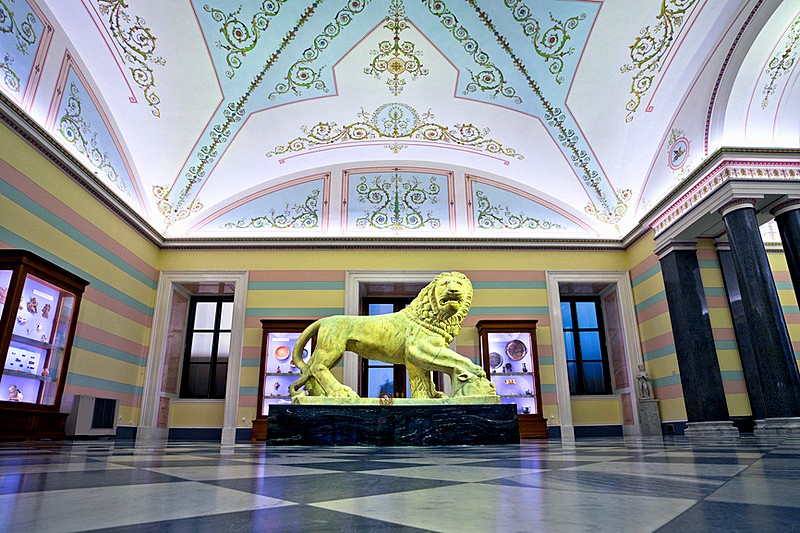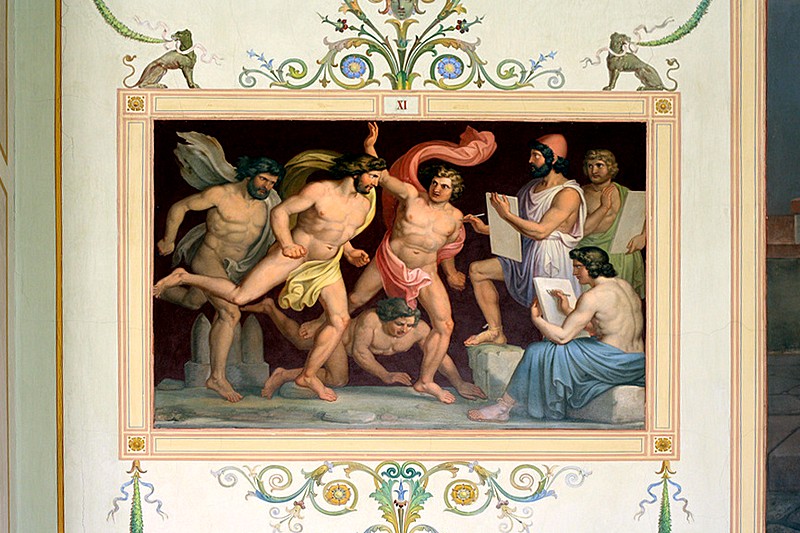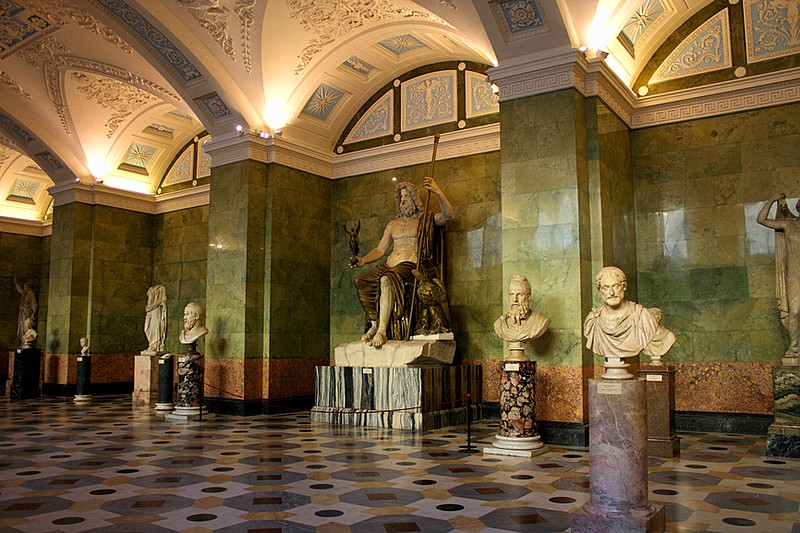Antiquities
Located on the first floor of the Old Hermitage, this often ignored section of the museum deserves greater attention, not least because it is housed in some of the most beautifully decorated rooms in the Hermitage.
Covering 31 halls, the Antiquities Collection includes Assyrian, Mesopotamian, and Egyptian artifacts, as well as huge quantities of Greek and Roman statuary. Admittedly, many of the statues, such as those included in the gorgeous, green marble Jupiter Hall, are more decorative than historically significant, many of them being Roman copies of Greek originals. Among the highlights of the Antiquities Collection are the superb collection of Attic vases, with their distinctive black-and-red pictorial designs, and Catherine the Great's splendid collection of ancient cameos and engraved intaglio seals, with examples dating back to the Aegean era (2nd millennium BC).
While much of the classical collection represents the collecting mania of Catherine and her successors, the halls devoted to artifacts from the North Black Sea Coast are a testament to the more serious work of 19th and 20th Century Russian/Soviet archaeologists, and are fascinating for the picture they give of this outpost of ancient civilization, where Greek and Roman influences mixed with local barbarian and Scythian traditions. The collection covers the period from the 6th century BC to the 4th century AD, and highlights include a rare collection of heavily ornamented wooden sarcophagi from 4th-3rd centuries BC, and the contents of several burial mounds from the same period.





